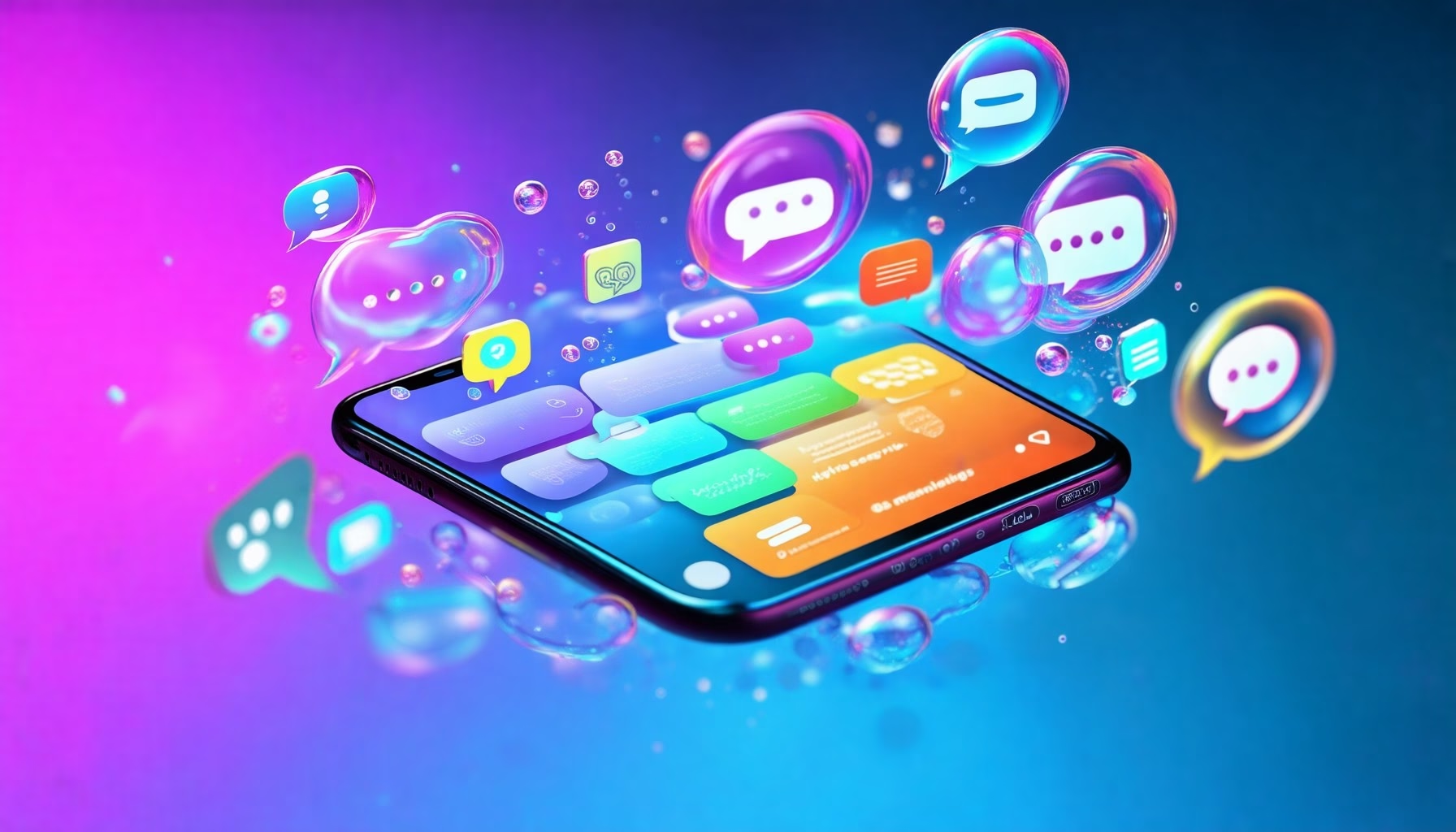Key Takeaways
- Enhance User Engagement: In-app messaging delivers targeted communications, improving user retention and interaction within mobile applications.
- Real-Time Communication: Unlike push notifications, in-app messages capture user attention while they are actively using the app, leading to higher engagement rates.
- Personalization Matters: Tailoring in-app messages based on user behavior and preferences can increase user engagement by up to 300%.
- Diverse Message Formats: Utilize various formats like banners, modals, and full-screen messages to achieve different communication goals effectively.
- Analytics for Optimization: Leverage analytics tools provided by platforms like Firebase and Salesforce to refine in-app messaging strategies based on real user data.
- Integration Capabilities: Seamlessly integrate in-app messaging with other marketing tools to enhance overall user communication and experience.
In today’s digital landscape, in-app messaging has emerged as a pivotal tool for enhancing user engagement and communication within mobile applications. This article delves into the intricacies of in-app messaging, exploring its definition, importance, and the various tools available to implement it effectively. We will compare in-app messaging vs push notifications, highlighting the advantages of each and when to utilize them for maximum impact. Additionally, we will examine real-world examples of in-app messaging, including its application on platforms like Facebook and popular hidden message apps. By understanding the purpose of in-app notifications and the best practices for crafting effective messages, you can significantly enhance the user experience. Join us as we navigate through the essential features of in-app messaging tools, including solutions from Firebase and Salesforce, and discover how to leverage these insights for your mobile development projects.
Understanding In-App Messaging: Definition and Importance
In-app messages are targeted communications delivered to users while they are actively engaged within a mobile application. These messages serve various purposes, such as enhancing user experience, promoting features, or providing important updates. They are commonly referred to by several terms, including in-app notifications, in-app messaging, carousels, and Message Center or App Inbox messages.
Key characteristics of in-app messages include:
- Real-Time Engagement: In-app messages are designed to capture user attention at the moment they are using the app, making them more effective than traditional push notifications.
- Personalization: These messages can be tailored based on user behavior, preferences, and demographics, allowing for a more personalized experience that can increase user retention and engagement.
- Variety of Formats: In-app messages can take various forms, including banners, modals, and full-screen messages, each serving different communication goals.
- Analytics and Optimization: Many platforms that offer in-app messaging, such as Airship, provide analytics tools to track user interactions with these messages, enabling developers to optimize their messaging strategies based on real user data.
- Integration with Other Tools: In-app messaging can be integrated with other marketing tools, such as Messenger Bots, to create a seamless communication experience across different channels, enhancing user engagement further.
According to a study by Localytics, personalized in-app messages can increase user engagement by up to 300%, highlighting the importance of effective in-app communication strategies. For more information on best practices for in-app messaging, refer to resources from industry leaders like Braze, which provide insights into optimizing user engagement through effective messaging techniques.
In-App Messaging Tools: Key Features and Benefits
When considering in-app messaging tools, it’s essential to evaluate their key features and benefits. Tools like Firebase and Salesforce offer robust functionalities that enhance user engagement. Here are some critical features to look for:
- Customizable Templates: Many in-app messaging tools provide customizable templates that allow businesses to create visually appealing messages that align with their branding.
- Segmentation Capabilities: Effective tools enable user segmentation based on behavior, preferences, and demographics, ensuring messages are relevant and timely.
- Multi-Platform Support: Tools that support various platforms, such as in-app messaging for Android and in-app messaging for iOS, allow for a consistent user experience across devices.
- Analytics and Reporting: Comprehensive analytics features help track the performance of in-app messages, enabling businesses to refine their strategies based on user interactions.
By leveraging these features, businesses can enhance their communication strategies and improve user engagement through effective in-app messaging.

Understanding In-App Messaging: Definition and Importance
In-app messaging is a powerful communication tool that allows businesses to engage users directly within their applications. Unlike push notifications, which can interrupt users outside the app, in-app messages provide contextual information while users are actively engaged. This approach not only enhances user experience but also drives higher retention rates. By leveraging in-app messaging, businesses can deliver personalized content, guide users through features, and promote new offerings effectively.
In-App Messaging Tools: Key Features and Benefits
When considering in-app messaging, it’s essential to explore the tools available that can enhance your messaging strategy. Tools like Firebase In-App Messaging and Salesforce In-App Messaging offer robust features designed to optimize user engagement. Key features include:
- Targeted Messaging: Tailor messages based on user behavior and preferences, ensuring relevance and increasing engagement.
- Real-Time Analytics: Monitor user interactions with in-app messages to refine strategies and improve effectiveness.
- Seamless Integration: Easily integrate with existing platforms, such as Messenger Bot, to enhance communication across channels.
- Customization Options: Design visually appealing messages that align with your app’s branding and user interface.
Utilizing these tools can significantly enhance your in-app messaging strategy, leading to improved user satisfaction and retention.
In-App Messaging Examples: Real-World Applications
Real-world applications of in-app messaging demonstrate its effectiveness in various industries. For instance, Braze provides examples of brands using in-app messages to promote new features or guide users through onboarding processes. Other notable examples include:
- Uber In-App Messaging: Uber uses in-app messages to inform users about ride updates and promotions, enhancing the overall user experience.
- Facebook In-App Messages: Facebook employs in-app messaging to engage users with personalized content and notifications about friend activities.
- Adobe Journey Optimizer: This tool allows businesses to create tailored in-app messages that enhance customer journeys through targeted engagement.
These examples highlight how in-app messaging can be leveraged to improve user engagement and satisfaction across different platforms. By implementing effective in-app messaging strategies, businesses can foster stronger relationships with their users and drive long-term loyalty.
What do hidden message apps look like?
Hidden message apps, often referred to as “ghost apps,” are designed to disguise secret communications and activities, making them particularly concerning for parents monitoring their children’s online interactions. These apps typically use innocuous interfaces to mask their true purpose.
Common Types of Hidden Messaging Apps
- Calculator Apps: Many secret messaging apps disguise themselves as standard calculator applications. For example, apps like Calculator Pro+ and Casper Calculator function as regular calculators but also allow users to send and receive hidden messages.
- Photo Vaults: Apps such as Vaulty and Keepsafe appear to be photo storage solutions but can also store hidden chats and messages, providing a dual function that conceals their true intent.
- Social Media Clones: Some apps mimic popular social media platforms but are designed to facilitate secret conversations. These can include modified versions of mainstream messaging services.
Features of Hidden Messaging Apps
- Password Protection: Most hidden messaging apps require a password or PIN to access, adding a layer of security that makes them difficult to detect.
- Disappearing Messages: Many of these apps offer features that allow messages to self-destruct after being read, similar to Snapchat’s functionality, which can further obscure communication.
- Stealth Mode: Some apps operate in a stealth mode, meaning they can send notifications that appear as regular app alerts, making it hard for parents to notice unusual activity.
In-App Messages Facebook: Understanding Their Role
In-app messages on Facebook are targeted communications that appear within the app while it is actively being used, providing a direct way to engage users without the need for external notifications. These messages can be utilized for various purposes, including promoting new features, offering personalized content, or encouraging user interaction.
Key characteristics of in-app messages include:
1. **Visibility**: Unlike push notifications, which can interrupt users when the app is not in use, in-app messages are designed to be seen only when users are actively engaging with the app. This ensures that the communication is timely and relevant.
2. **Customization**: Businesses can tailor in-app messages to specific user segments based on behavior, preferences, and demographics, enhancing the relevance and effectiveness of the communication.
3. **Engagement**: In-app messages can include interactive elements such as buttons or links, allowing users to take immediate action, such as exploring new features or completing a purchase.
4. **Analytics**: Facebook provides insights into the performance of in-app messages, allowing businesses to track engagement rates and optimize their messaging strategies accordingly.
In-app messages are a powerful tool for enhancing user experience and driving engagement within the Facebook ecosystem. For more detailed insights on best practices and implementation strategies, refer to the Facebook Messenger Business documentation and resources from industry leaders like HubSpot and Sprout Social.
How Facebook Utilizes In-App Messaging for User Engagement
Facebook leverages in-app messaging to create a more personalized user experience, ensuring that users receive relevant content at the right moment. By utilizing data-driven insights, Facebook can segment users and deliver tailored messages that resonate with their interests. This approach not only enhances user satisfaction but also fosters a deeper connection between users and the platform.
For instance, Facebook may use in-app messages to inform users about new features, suggest friends, or promote events based on user activity. The integration of interactive elements, such as quick reply buttons, encourages users to engage directly with the content, leading to higher interaction rates.
Moreover, the analytics provided by Facebook allow businesses to measure the effectiveness of their in-app messaging campaigns. By analyzing user engagement metrics, businesses can refine their strategies and improve future messaging efforts, ensuring that they remain relevant and impactful.
Best Practices for Crafting Effective In-App Messages on Facebook
To maximize the effectiveness of in-app messages on Facebook, consider the following best practices:
1. **Be Concise**: Keep messages short and to the point. Users appreciate clear communication that respects their time.
2. **Use Strong Calls to Action**: Encourage users to take specific actions, such as exploring new features or participating in promotions, by using compelling calls to action.
3. **Test and Optimize**: Regularly test different message formats, timings, and content to determine what resonates best with your audience. Use analytics to guide your decisions.
4. **Segment Your Audience**: Tailor messages to specific user segments based on their behavior and preferences. This personalization increases the likelihood of engagement.
5. **Monitor Performance**: Continuously track the performance of your in-app messages to identify trends and areas for improvement. Adjust your strategy based on user feedback and engagement metrics.
By implementing these best practices, businesses can effectively utilize in-app messaging on Facebook to enhance user engagement and drive meaningful interactions. For further insights on messaging strategies, explore resources from Braze and Adobe Journey Optimizer.

The Purpose of In-App Notifications: Enhancing User Experience
The purpose of in-app notifications is to enhance user engagement and retention by delivering timely, relevant information directly within the application interface. These notifications serve several key functions:
- User Engagement: In-app notifications keep users informed about new features, updates, or promotions, encouraging them to explore the app further. Research indicates that personalized notifications can increase user interaction by up to 88% (Source: Localytics).
- Feature Discovery: By highlighting new functionalities or tools, in-app notifications facilitate the feature discovery process. This is crucial for maximizing the utility of the app and ensuring users are aware of all available options.
- Task Reminders: Notifications can nudge users toward completing specific tasks, such as finishing a purchase or participating in a survey. This targeted approach can significantly improve conversion rates and user satisfaction.
- Real-Time Updates: In-app notifications provide real-time information, such as alerts about messages or updates, ensuring users remain connected and informed without leaving the app.
- Feedback Collection: They can also be used to solicit user feedback or encourage participation in app-related activities, enhancing the overall user experience and fostering a sense of community.
Incorporating in-app notifications effectively can lead to improved user retention and satisfaction, making them a vital component of modern app design and user experience strategies. For further insights, refer to studies by Nielsen Norman Group and industry reports from App Annie.
Types of In-App Notifications: Informative vs Promotional
In-app notifications can be categorized into two main types: informative and promotional. Understanding the distinction between these types is essential for effective user engagement.
- Informative Notifications: These notifications provide users with essential information about app updates, new features, or changes in functionality. For example, an in-app messaging Firebase notification might inform users about a new feature that enhances their experience.
- Promotional Notifications: These are designed to drive user action, such as encouraging purchases or participation in special events. For instance, an in-app messaging Salesforce notification could promote a limited-time offer, enticing users to engage with the app more actively.
By strategically utilizing both types of notifications, businesses can create a balanced approach that not only informs users but also drives engagement and conversions.
In-App Messaging Tools: Choosing the Right Solution
In-app messaging tools are essential for businesses looking to enhance user engagement and streamline communication. By leveraging platforms like Firebase and Salesforce, companies can implement effective in-app messaging strategies tailored to their specific needs. Below, we explore the key features and benefits of two leading solutions: in-app messaging Firebase and in-app messaging Salesforce.
In-App Messaging Salesforce: Features and Integration
Salesforce offers a robust in-app messaging solution that integrates seamlessly with its Customer Relationship Management (CRM) platform. Key features include:
- Personalization: Salesforce allows businesses to tailor messages based on user behavior and preferences, enhancing engagement.
- Analytics: The platform provides detailed insights into user interactions, enabling businesses to optimize their messaging strategies.
- Automation: With automated workflows, Salesforce can trigger messages based on specific user actions, improving response rates.
By utilizing in-app messaging Salesforce, businesses can create targeted campaigns that resonate with users, ultimately driving conversions.
In-App Messaging Firebase: Benefits for Developers
Firebase offers a powerful in-app messaging solution that is particularly beneficial for developers. Its advantages include:
- Cross-Platform Support: Firebase in-app messaging supports both iOS and Android, making it easier for developers to reach a wider audience.
- Integration with Other Firebase Services: Developers can easily integrate in-app messaging with other Firebase tools, such as analytics and cloud messaging, to create a comprehensive user engagement strategy.
- Customizable UI: Firebase allows developers to design in-app messaging UI that aligns with their app’s branding, ensuring a cohesive user experience.
Utilizing in-app messaging Firebase can significantly enhance user interaction and retention, making it a valuable tool for mobile app developers.
In-App Messaging Tools: Choosing the Right Solution
When it comes to in-app messaging, selecting the right tools can significantly enhance user engagement and streamline communication. Two of the most prominent solutions are in-app messaging Firebase and in-app messaging Salesforce. Each offers unique features tailored to different business needs.
In-App Messaging Salesforce: Features and Integration
Salesforce’s in-app messaging capabilities are designed to integrate seamlessly with its broader marketing cloud services. Key features include:
- Personalization: Salesforce allows businesses to tailor messages based on user behavior and preferences, enhancing the relevance of communications.
- Analytics: The platform provides robust analytics tools to track user engagement and message effectiveness, enabling continuous optimization.
- Automation: With automated workflows, businesses can send timely messages triggered by specific user actions, improving response rates.
Integrating Salesforce in-app messaging with existing CRM systems can streamline customer interactions and improve overall user experience.
In-App Messaging Firebase: Benefits for Developers
Firebase offers a powerful suite of tools for developers looking to implement in-app messaging, particularly for mobile applications. Its benefits include:
- Cross-Platform Support: Firebase supports both in-app messaging Firebase iOS and in-app messaging Firebase Android, making it ideal for developers targeting multiple platforms.
- Easy Integration: Firebase’s SDKs simplify the integration process, allowing developers to implement messaging features quickly.
- Real-Time Messaging: Firebase enables real-time communication, ensuring users receive timely updates and notifications.
For developers using frameworks like in-app messaging Flutter or in-app messaging React Native, Firebase provides comprehensive support, making it a preferred choice for modern app development.




